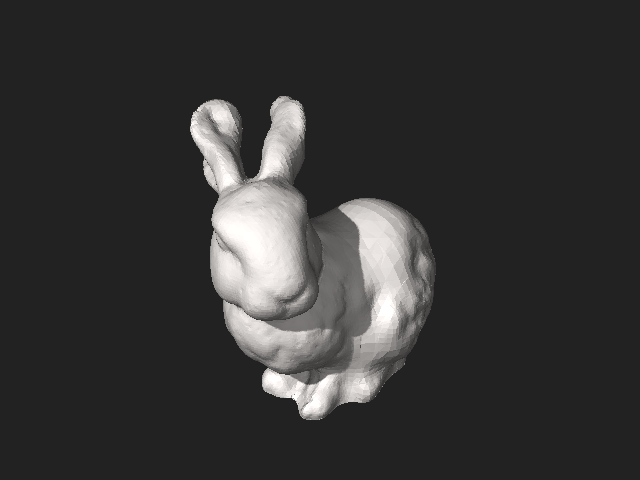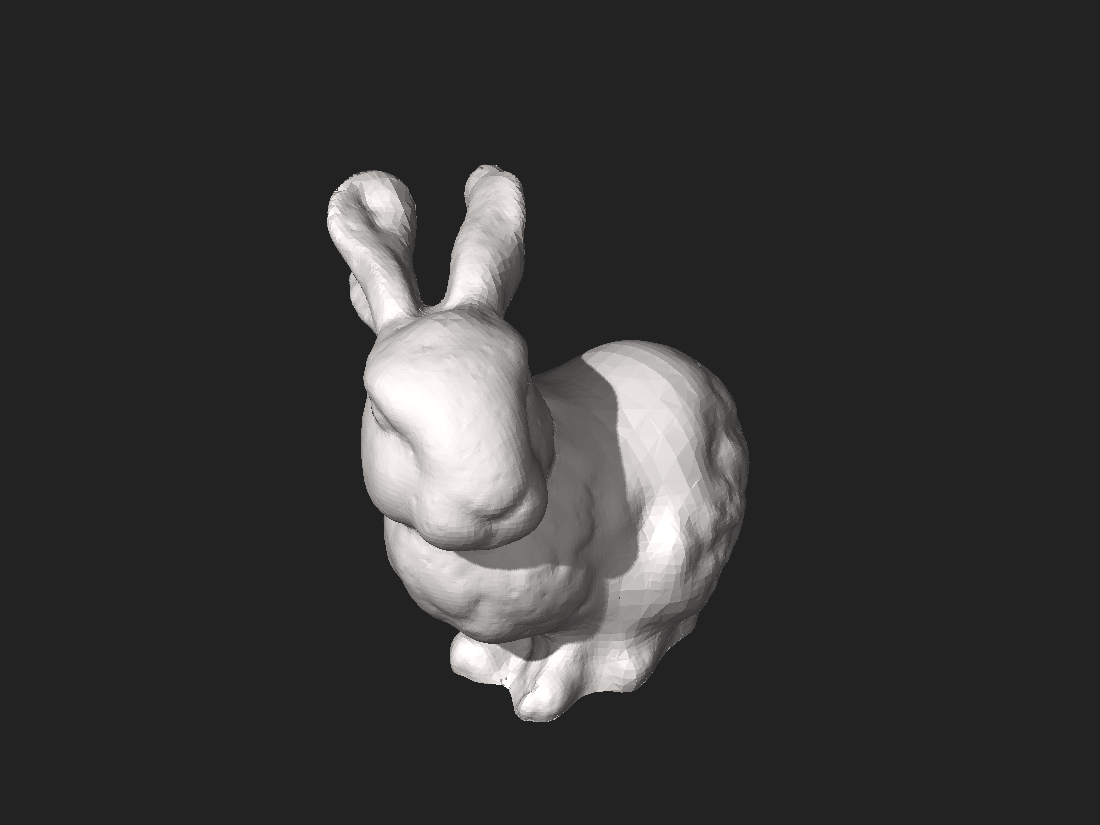Top Qs
Timeline
Chat
Perspective
Stanford bunny
Computer graphics 3D reference model From Wikipedia, the free encyclopedia
Remove ads
The Stanford bunny is a computer graphics 3D test model developed by Greg Turk and Marc Levoy in 1994 at Stanford University. The model consists of 69,451 triangles, with the data determined by 3D scanning a ceramic figurine of a rabbit.[1] This figurine and others were scanned to test methods of range scanning physical objects.[2]

The data can be used to test various graphics algorithms, including polygonal simplification, compression, and surface smoothing. There are a few complications with this dataset that can occur in any 3D scan data: the model is manifold connected and has holes in the data, some due to scanning limits and some due to the object being hollow.[3] These complications provide a more realistic input for any algorithm that is benchmarked with the Stanford bunny,[4] though by today's standards, in terms of geometric complexity and triangle count, it is considered a simple model.
The model was originally available in .ply (polygons) file format in four different resolutions.[citation needed]
The model can be found at https://graphics.stanford.edu/data/3Dscanrep/[5]
Remove ads
See also
References
External links
Wikiwand - on
Seamless Wikipedia browsing. On steroids.
Remove ads
